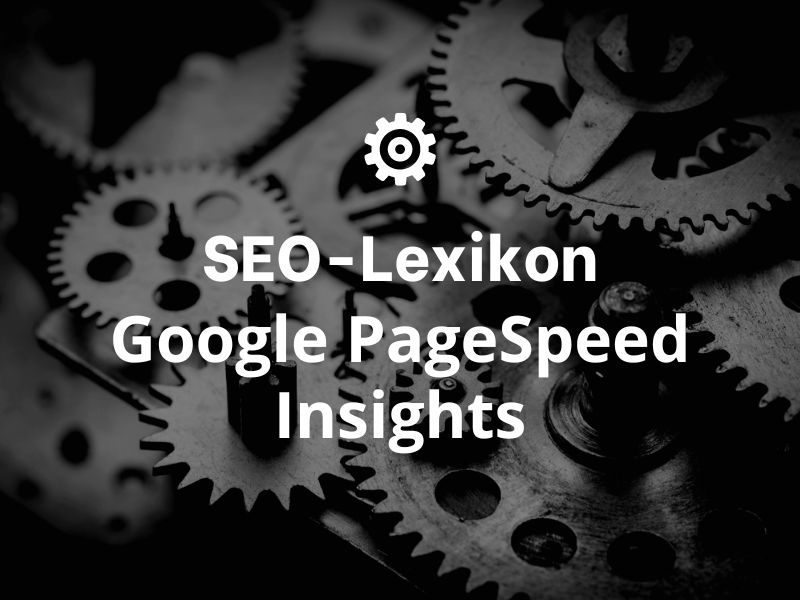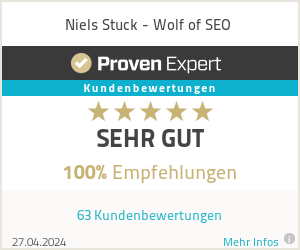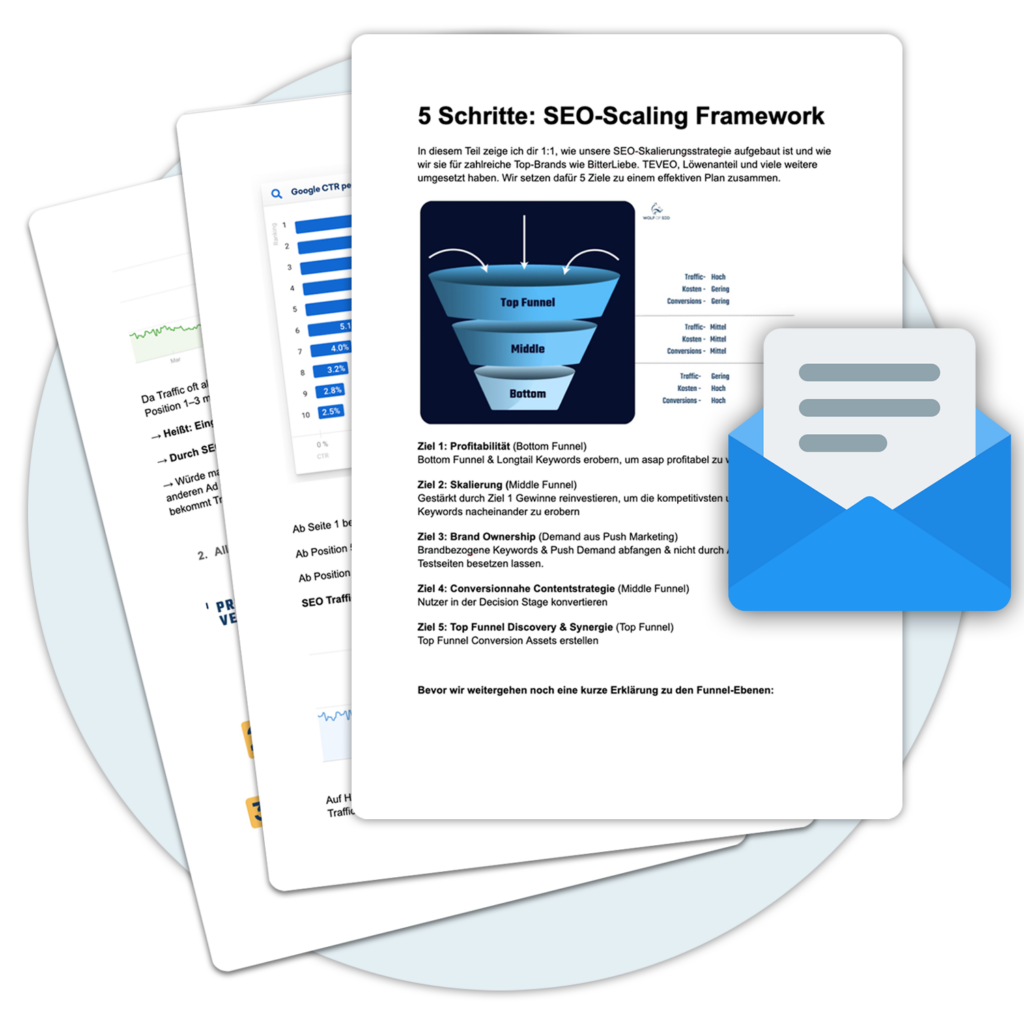
If you are wondering if the Google PageSpeed Insights assessment is important, our short answer is yes. The Google PageSpeed Insights Grade is important (and reliable).
That was not always the case with us. In the past, we said that you don't care about the Google PageSpeed Insights rating, because the rating alone is not an indicator of speed.
Even though there is still a difference between the Google PageSpeed Score and the loading time of your website, things have changed - and we need to keep up with the news.
From June 2021, the Google PageSpeed Score based on the Core Web Vitals, which are included in the new ranking factor Page Experience be closely linked to your SEO performance.
In this article you will learn why Google PageSpeed Insights is important and accurate for measuring various aspects of your website's user experience, including performance.
You'll also learn why you should always pay attention to the loading time - Google PageSpeed Insights can still be a little misleading, and we at Wolf of SEO attach a lot of importance to this key figure!
Last but not least, you'll get some tips on how to make your mobile PageSpeed Score, the most important grade.
You will get answers to the most common questions and doubts about the meaning of PageSpeed Insights, including the evergreen question: Is the 100/100 PageSpeed-Score important?
What Google PageSpeed Insights is and what the PageSpeed Score means
Google PageSpeed Insights is one of Google's tools to measure and improve your website's performance on mobile and desktop devices.
First provides you PageSpeed Insights the overall value for your site's performance.
The Google PageSpeed Score is determined by Lighthouse, an open source tool run by Google's team. Lighthouse performs various audits, including a performance audit. After performing the performance audit and assessing various metrics, Lighthouse determines the performance score - which is the same score that Google PageSpeed supplies.
The Google PageSpeed-Valuation is based on laboratory data. This means that Google PageSpeed Insights collects performance data in a controlled environment via Lighthouse. The simulation is performed with the predefined device and network settings.
Since the Google PageSpeed score is based on predefined conditions - e.g. the Internet connection - it does not reflect the actual user experience 100 %. Therefore, the PageSpeed Insights tool also field data.
Why field data is so important
Real field data is based on the aggregated data that Google Chrome collects from users and stores in the Chrome User Experience Report (CrUX).
This data is very valuable because it captures real user experiences - which is why this data can also differ slightly from lab data and is not always available.
The field data stored in the CrUX contains all three Core Web Vitals. You can quickly recognize them by the blue flag: Largest Contentful Paint (charging power), First Input Delay (Interactivity), Cumulative Layout Shift (visual stability).
At this point it is useful to know that the laboratory data only contain the values for Largest Contentful Paint and Cumulative Layout Shift included. The key figure First Input Delay cannot be measured without real user interaction. Therefore, the performance evaluation takes into account the Total Blocking Time metric, which is used as a proxy.
Last but not least, the field data is valuable because Google can use it to improve the SEORanking evaluated - more on this topic in the very next section!
How to use Google PageSpeed Insights
In this example we use the website wolf-of-seo.com.
- Open Google PageSpeed Insights: First you have to go to the Google PageSpeed Insights Website go
- Give the URL aIn the text field on the home page you enter the URL der Website ein, die du überprüfen möchtest. In unserem Fall also
https://wolf-of-seo.de. - Start the analysis: After you have URL eingegeben hast, klickst du auf „Analysieren“. Das Tool wird nun die Website prüfen und einen ausführlichen Bericht erstellen, der dir zeigt, wie schnell die Seite lädt und was verbessert werden könnte.
- Watch the reportOnce the analysis is complete, you will see an overview of your website's performance. You will see a score from 0 to 100 for mobile and desktop devices. A higher score means better performance.
- ExampleIf your website has a score of 85, it means that it is doing pretty well compared to other websites. However, if it has a score of 50, there are probably some things you could improve.
- Understand the categoriesThe results are displayed in different categories: "Speed" shows how fast your site loads; "Optimization" shows how well your site is optimized for fast loading.
- Follow the recommendations: Specific recommendations for improving page performance are listed below the scores. These could include suggestions for optimizing images, reducing JavaScript and CSS, or improving the server response time.
- Example: If you see a recommendation that says "optimize images", the images on the website could be
wolf-of-seo.combe too large or not properly compressed. By optimizing these images you could improve the page loading time.
- Example: If you see a recommendation that says "optimize images", the images on the website could be
- Implement the recommendationsDepending on your technical know-how and the resources you have available, you can start implementing the recommendations. Some changes can be simple, such as compressing images, while others, such as optimizing JavaScript and CSS, could require more technical expertise.
- Test againAfter you have made some or all of the suggested improvements, go back to Google PageSpeed Insights and test the site again. You should see an improvement in your site's score and performance.
The most important thing is to follow the recommendations of Google PageSpeed Insights as a guide and try to implement as many of them as possible. Even if you can't implement every single recommendation, even small improvements can make a big difference in the speed and performance of your website.
What metrics does Google PageSpeed Insights measure?
Google PageSpeed Insights is a tool that helps you understand how well (or poorly) your website is doing in terms of performance. It measures various metrics that indicate how fast and responsive your site is. Let's take a closer look at these metrics:
- First Contentful Paint (FCP)Measures the time from the start of the page load to the point at which the first text or image is rendered. This is the moment when the visitor thinks: "Ah, something's happening!"
- ExampleImagine you go to a web page and within 2 seconds you see the first text. That would be the FCP value.
- Optimization: Load critical CSS (the one you need for the visible part of the page) as early as possible and move non-essential JavaScript.
- Recommendation: If you have a slider on your web page with JavaScript at the beginning, you could use the JavaScript delay for it, so that the first content becomes visible faster.
- Largest Contentful Paint (LCP): This is the time it takes for the largest visible element on the page to fully load. When the main content of a page takes a long time to load, visitors often feel frustrated.
- ExampleYou load a web page, and the main image or a large section of text takes 4 seconds to be completely visible. This would be the LCP value.
- OptimizationImages are often the culprit here. Compress and load them in modern formats like WebP. Also use lazy loading so that images are loaded only when they are in the user's field of view.
- RecommendationImagine you have a huge background image. If you convert it to a compressed WebP format and use lazy loading, the loading time could be significantly improved.
- Time to Interactive (TTI): This is about how long it takes until the page is not only loaded but also interactive - i.e. until you can click on links or fill out forms, for example.
- ExampleIf a page is visible after 5 seconds, but only really "usable" after 7 seconds, then this value is 7 seconds.
- Optimization: Minimize and share JavaScriptso that only the most important is loaded first. Non-critical code can be delayed.
- Recommendation: If you have many JavaScript-If you have functions that are needed later (e.g. for a contact form at the bottom of the page), you could delay their loading until the user actually scrolls there.
- Total Blocking Time (TBT): This is the total time between the FCP and the TTI during which the site was unresponsive. It therefore shows how often and for how long the main thread of the page was "blocked".
- Cumulative Layout Shift (CLS)Did the page "jump" when loading? For example, because images or advertisements were loaded later and moved the text? This can be really annoying and is measured by the CLS.
- ExampleYou are reading an article and want to click on a link, but suddenly an image loads and all the text shifts. That would be a high CLS.
- Optimization: Give images and other media fixed sizes (height and width) in HTML/CSS to avoid sudden layout changes.
- RecommendationIf an ad banner without a fixed size loads afterwards and moves the text, you would be able to prevent this by setting a concrete size.
- Speed IndexThis value indicates how quickly the content of a page becomes visible. It is a kind of average value that represents how quickly the various elements on your page load.
- Recommendations for performance improvement: After analyzing the above metrics gives you Google PageSpeed Insights specific tips on how you can improve performance. This can be anything from "compressing images" to "JavaScript reduce".
- Example: The tool might suggest that you shrink a certain image to make it load faster, or that you preload certain resources to reduce the overall load time.
It's important to remember that these metrics are designed to provide a better user experience. It's not just about getting the perfect score, but improving the actual experience of your website visitors. Every point you optimize here will make your site more enjoyable for those who visit it.
Why Google PageSpeed is important (and why it affects SEO)
Google PageSpeed is important because it can impact SEO from two different perspectives: mobile speed and user experience.
Both mobile performance and user experience are associated with certain ranking factors:
- In July 2018, Google introduced the Speed Update, and mobile page speed became a direct ranking factor, both for Google search and ads.
- In June 2021, the Page Experience Signal was introduced as an SEO ranking factor. This new ranking factor measures the user experience of a page. It includes several signals: mobile-friendliness, HTTPS security, guidelines for intrusive ads, secure browsing and the aforementioned Core Web Vitals metrics.
On the one hand, mobile page speed has been a ranking factor for more than two years. Hopefully, you already take care of your website's mobile performance. If you still have doubts, you can find some performance optimization tips in the last section of this article.
The three Core Web Vitals, on the other hand, focus on how users interact with your site and account for 70 % of the total PageSpeed scores. This means that they are used to determine the PageSpeed Insights scores are very important.
Even if the Google PageSpeed Score as a whole no Ranking-factor, you need to take care of the Core Web Vitals. As already mentioned, they are part of the new Ranking-Signal Page Experience and influence your organic visibility.
Below you can find the required score for each Core Web Vital. You should think about how to improve them!
Is Google PageSpeed Insights reliable and accurate?
Yes, Google PageSpeed Insights is now quite reliable and accurate when it comes to measuring the overall user experience on your website. Thanks to the various metrics, you get an accurate overview of how users interact with your website.
The tool has become more and more reliable thanks to the latest changes.
In November 2018, Google PageSpeed 5.0 has been released. In the new version, the above-mentioned Chrome User Experience Report (CrUX) is used. Lighthouse audits are now also used.
Then in May 2020 came Lighthouse 6.0, adding new metrics - the same ones you now see in the PageSpeed Insights tool and that capture overall performance and user experience.
That's why you can count on the PageSpeed Score and its metrics to understand how your site is performing. And, of course, you should follow the recommendations of PageSpeed Follow Insights to improve your score.
Since the Google PageSpeed score is now more accurate, an improvement in the score usually also reflects an improvement in the loading time.
Wait... does that mean that the PageSpeed score does not reflect how fast a website is? The honest answer is: it depends.
Why the Google PageSpeed Score is not synonymous with loading performance
At WP Rocket it is important for us to educate users about web performance and give them the best tools to understand this complex topic.
Therefore, we would like to point out that the Google PageSpeed Score cannot reflect how fast your website is.
To be clear, you can make a good PageSpeed-score, but your website can't be that fast. Or you can have a fast website and a bad PageSpeed-Score.
We'll give you a few examples - maybe you can identify with them!
Example:
If you follow the recommendations of PageSpeed Insights, your website will not always be faster.
- Let's take the popular recommendation to use render-blocking JavaScript to remove. When you solve this problem, your PageSpeed Improve score. However, if you measure your load time with Pingdom, you won't necessarily see an improvement.
- The lower your PageSpeed-score, the more your load time will improve - but don't expect proportional improvements. If your Google PageSpeed-score increases from 10 to 90, it is very likely that your loading time will improve - let's say it decreases from 2 seconds to 1.5 seconds.
- If your GooglePageSpeed-score increases from 80 to 90, your loading time will only decrease slightly - for example, from 2s to 1.9s.
This is because the Google PageSpeed-score reflects the overall user experience more than the loading time.
The loading time is only the loading time of the page. The Google PageSpeed Score, on the other hand, takes into account six additional metrics beyond.
In the next section we will explain with practical examples how the Google PageSpeed Score is calculated. You'll see how the metrics work together for both performance and user experience.
Remember that you need to pay attention to both the load time and the Google PageSpeed score. Both are important for different reasons:
- If your load time is high, you're likely to lose users and conversions.
- When your PageSpeed-score is not good, probably the Core Web Vitals metrics will not be good either. And your website will be penalized from SEO point of view. Remember this: Core Web Vital makes 55% of the PageSpeed Scores from.
How the Google PageSpeed Insights Score is calculated
We have seen how the Google PageSpeed Score is relevant to SEO performance. Now let's take a closer look at the metrics that can make a difference in your score.
As mentioned earlier, the velocity value that you have entered above in your PageSpeed-report is based on the laboratory data analyzed by Lighthouse.
What is a good Google Pagespeed Score?
If you are wondering which Google PageSpeed-value you should aim for, you should know that a good value starts at 90 - the threshold that gives you the green color.
The value is divided into three levels:
- Good: Your score is 90 or higher (green)
- Needs improvement: Your score is between 50 and 90 (orange)
- Bad: Your score is below 50 (red).
PageSpeed Insights metrics and weighting
The Google PageSpeed Score includes six metrics:
- First content rich image
- Largest content-rich image (Core Web Vitals metric).
- Speed index
- Cumulative Layout Shift (Core Web Vitals Metric)
- Time to interactivity
- Total Blocking Time (wie wir gesehen haben, ersetzt sie die First Input Delay, the third Core Web Vitals metric that cannot be measured in the laboratory).
It is important to know that each metric has a different weighting.
There are metrics that are more important than others in determining your overall score. Improving some of them will affect your score more than others.
In the Core Web Vitalswirst you see that the largest content-rich image and the total blocking time are the metrics that make the biggest difference. They both account for 55% of the total score.
If you have a bad Largest Contentful Paint oder eine schlechte Total Blocking Time hast, ist es wahrscheinlich, dass auch deine Ladezeit sehr hoch ist. Das liegt daran, dass sich diese beiden Kennzahlen auf die Ladeleistung und die Interaktivität der Seite beziehen.
How performance evaluation changes as a function of LCP and TTB.
If you improve both metrics, your load time will also decrease. How much it decreases depends on your baseline - as we explained in the examples above.
In June 2021, Lighthouse 8.0 increased the weighting of the Cumulative Layout Shift metric, which now accounts for 15 %.
Now you know which metrics are most important for your SEO and performance optimization. It's time to get good results and improve both Core Web Vitals and Load Time in one go!
Google PageSpeed Insights Mobile vs. Desktop: What's the difference?
The only difference between Google PageSpeed Insights Mobile and desktop is the rating you can get. A good PageSpeed Getting score for mobile devices is more complicated than getting the same score on desktop.
This is because the connection is slower on the cell phone. It's as simple as that.
By default, Lighthouse simulates a 3G connection. It is unfair to compare the mobile score with the desktop score. The desktop connection will always be faster.
There are also other reasons why your mobile score tends to be lower than your desktop score. Let's go through them and see how you can improve your performance on mobile.
How to improve a low mobile PageSpeed score
Do you have a low mobile PageSpeed Score? The Image optimization could be the key to solving your problems.
Two overlooked best practices will help you improve your poor mobile performance: resizing and delivering the right images for mobile devices, and optimizing image sizes (not just dimensions!).
Here are a few practical examples:
- Let's say you have a slider with a large image - about 2000 pixels. On desktop, where the average resolution is 1900 or 1400 pixels, the image would look fine. On mobile, however, the maximum width is 700 pixels.
- The size of the image will have a very negative effect on the cell phone. And this will aggravate the problem of 3G connection.
- Therefore, you should always load the right size depending on the device and then provide scalable images in the right size on mobile.
- The size of the image files can also lead to lower performance on the cell phone. If you optimize an image from 1 MB to 500 KB, your page will be faster. The smaller your page is, the faster it will load. This is especially true if you have a slower connection. That's why the Image optimization always has a greater impact on your mobile performance than on desktop performance. The worse your connection is, the more important the Image optimization.
Is it important to achieve a 100/100 Google PageSpeed score on mobile devices?
We will be as honest as possible. For the reasons mentioned above, it is almost impossible to achieve a 100 score on mobile. It is easier to achieve such a score on desktop.
The truth is that there is no difference between 95 and 100 points - neither on mobile nor on desktop. As far as Web Core Vitals performance is concerned, your goal should be to achieve a green score. And the green score starts at 90 - that's enough.
Don't stress about it! Google won't penalize you for having a score of 97 instead of 100. The user experience remains the same - and that's all that matters. But... if you still want to score 100 % on Google's Page Speed Test, check out case studies and learn the best speed tips!
How does PageSpeed Insights compare to other performance and speed testing tools?
Let's take a look at two of the most important performance and speed tools. You will have another proof that Google PageSpeed Insights is a reliable tool and that load time is a slightly different metric.
GT Metrix vs. Google PageSpeed Insights
The difference between PageSpeed Insights and GTmetrix is the place used for the performance test. Both now use the Lighthouse performance metrics, so the result should be the same.
Still, you may see a discrepancy between the two results.
This is because the closer your server is to the location of the server performing the test, the higher the score will be.
On the one hand calculates Google PageSpeed Insights your score based on the nearest server. However, if you do not have an account with GTmetrix, the default server in Vancouver will be used.
If possible, you should always perform your speed test with the closest location.
Google PageSpeed Insights vs. Pingdom
You can Google PageSpeed Insights and Pingdom do not compare with each other. Pingdom does not use Lighthouse and does not provide information about Core Web Vitals.
Pingdom gives only one mark for the loading time.
That's why you should always take a look at Pingdom. That's another thing. As we've seen, you need both performance and load time ratings to give your users the best experience.
Advantages
Google Page Speed Insights offers several benefits, including a detailed website performance analysis that allows developers to measure and optimize their page load speed. It also gives developers specific recommendations that they can implement to improve the performance of their website.
Use cases
Developers can use Google Page Speed Insights to measure and optimize the performance of their websites. It can also be used to check whether a page meets the performance guidelines of specific search engines.
Example 1
Suppose a developer wants to improve the performance of one of his websites. He can use PSI to perform a detailed analysis of the page and get recommendations on how to improve it. This allows him to improve the loading speed of his page and optimize the user experience.
Example 2:
Another developer wants to ensure that his site meets search engine guidelines. He can use PSI to check if his site meets the guidelines and get specific recommendations on how to improve the site.
Conclusion
Google PageSpeed Insights is a useful tool that helps developers measure and optimize the performance of their websites. It provides detailed analysis and specific recommendations to improve user experience and comply with search engine guidelines.
Google PageSpeed Insights has been evolving rapidly. It has undeniably gained importance thanks to Core Web Vitals, which will soon be reflected in your organic performance.
Google's tool is reliable, and you now know how to look critically at the performance score and each metric - without forgetting load time!
Learning a little more about web performance testing will help you understand where the priorities lie and how to proceed. Good luck with the introduction of the new ranking factor!
« Back to Glossary Index





